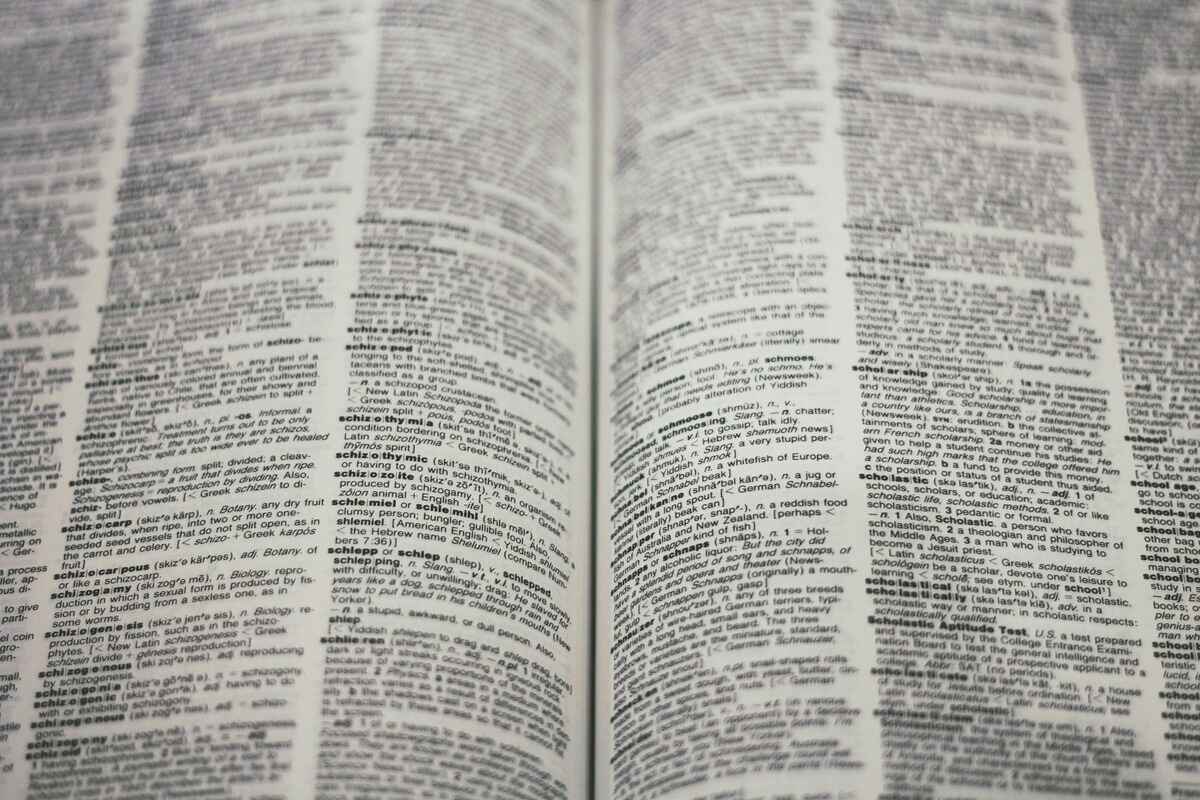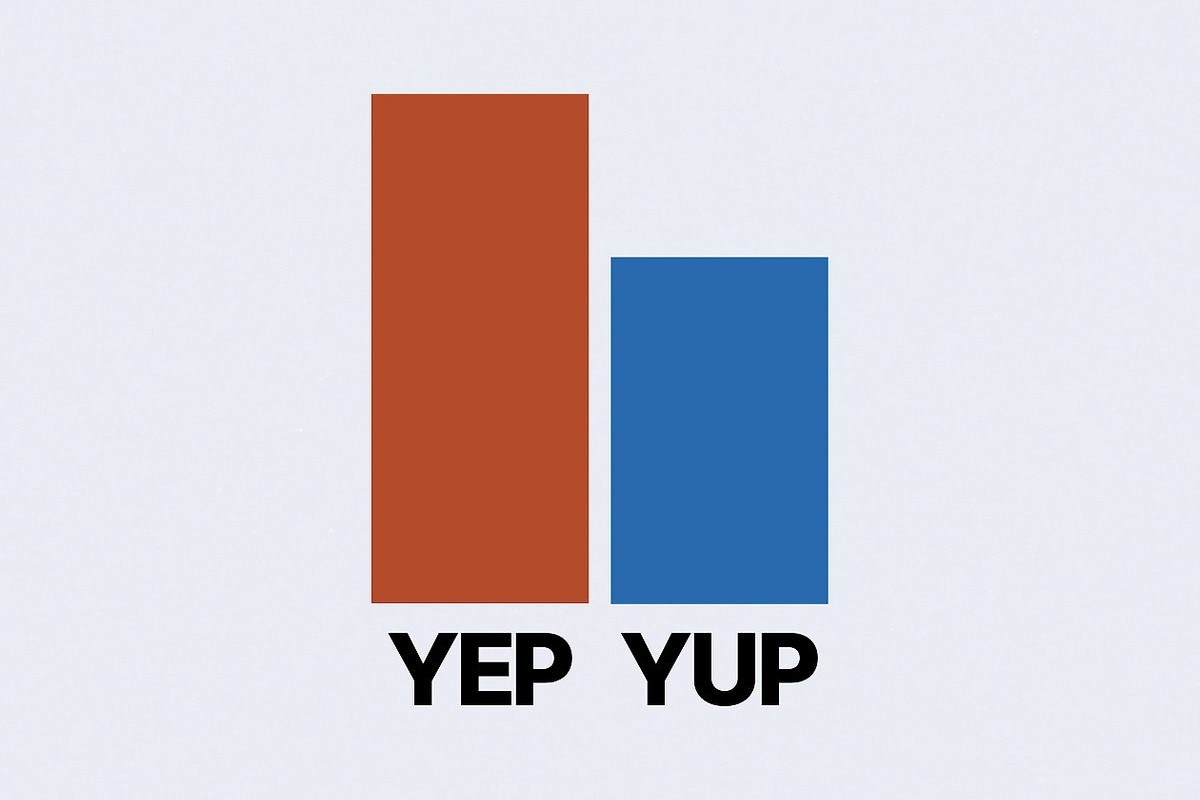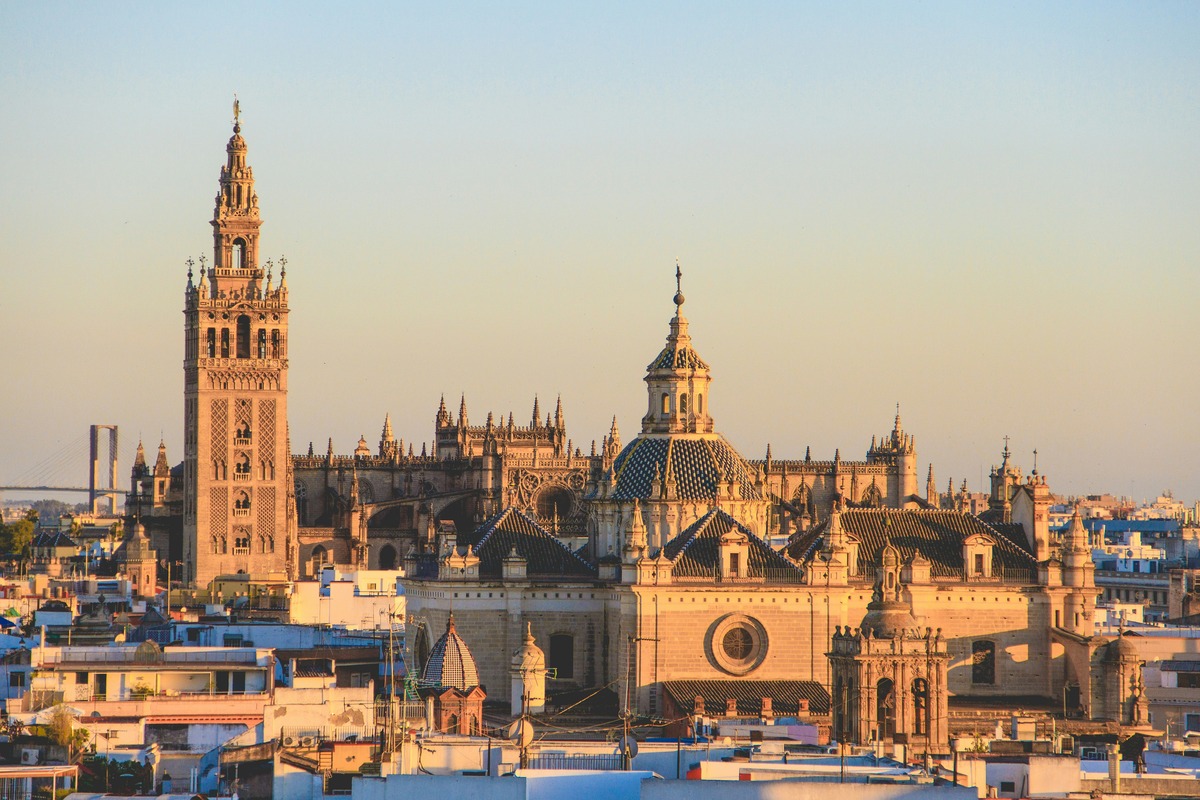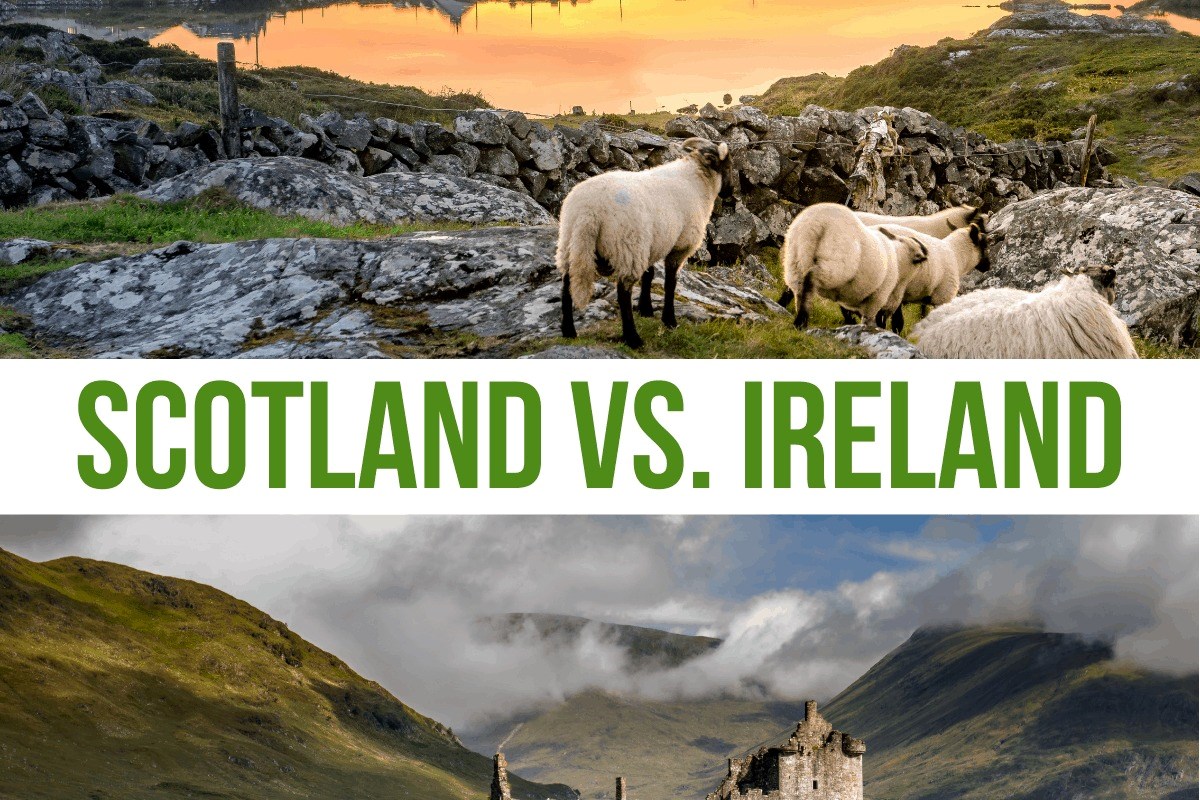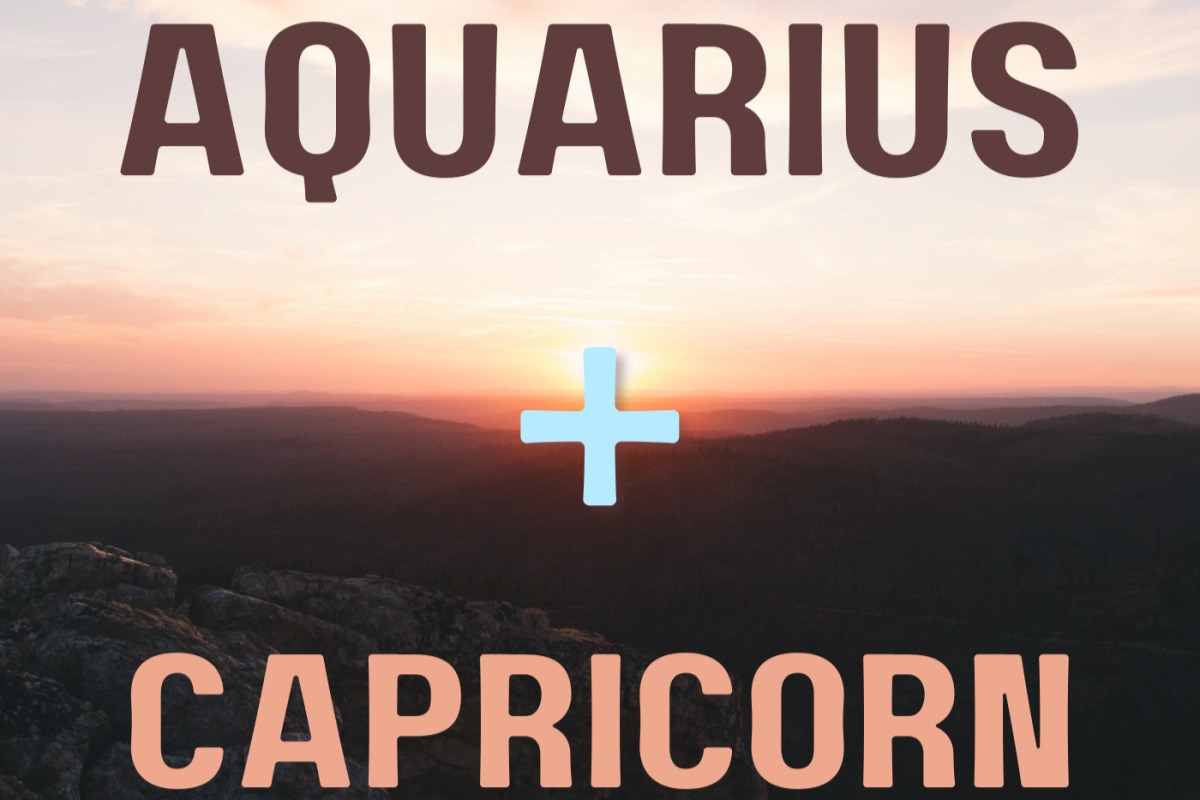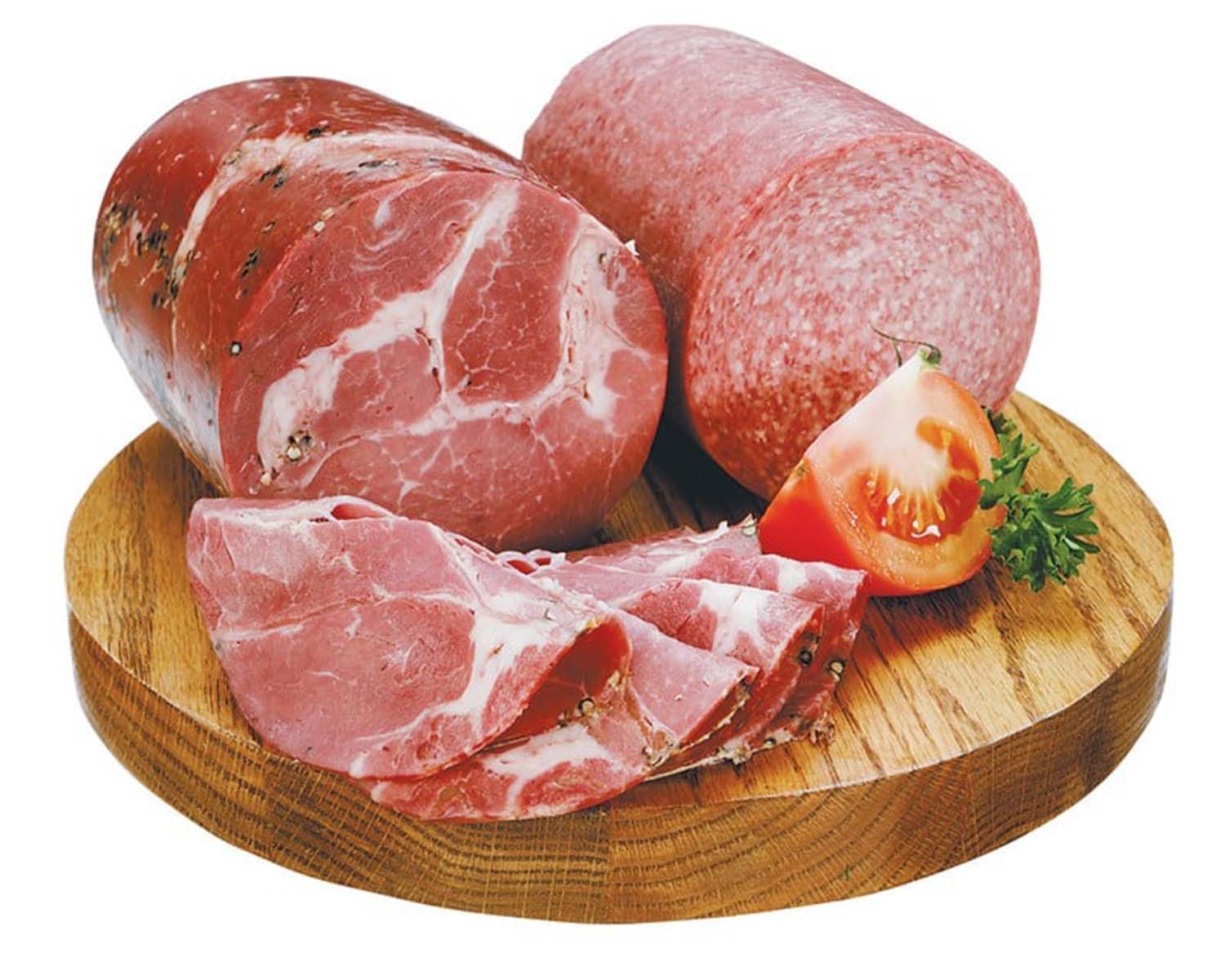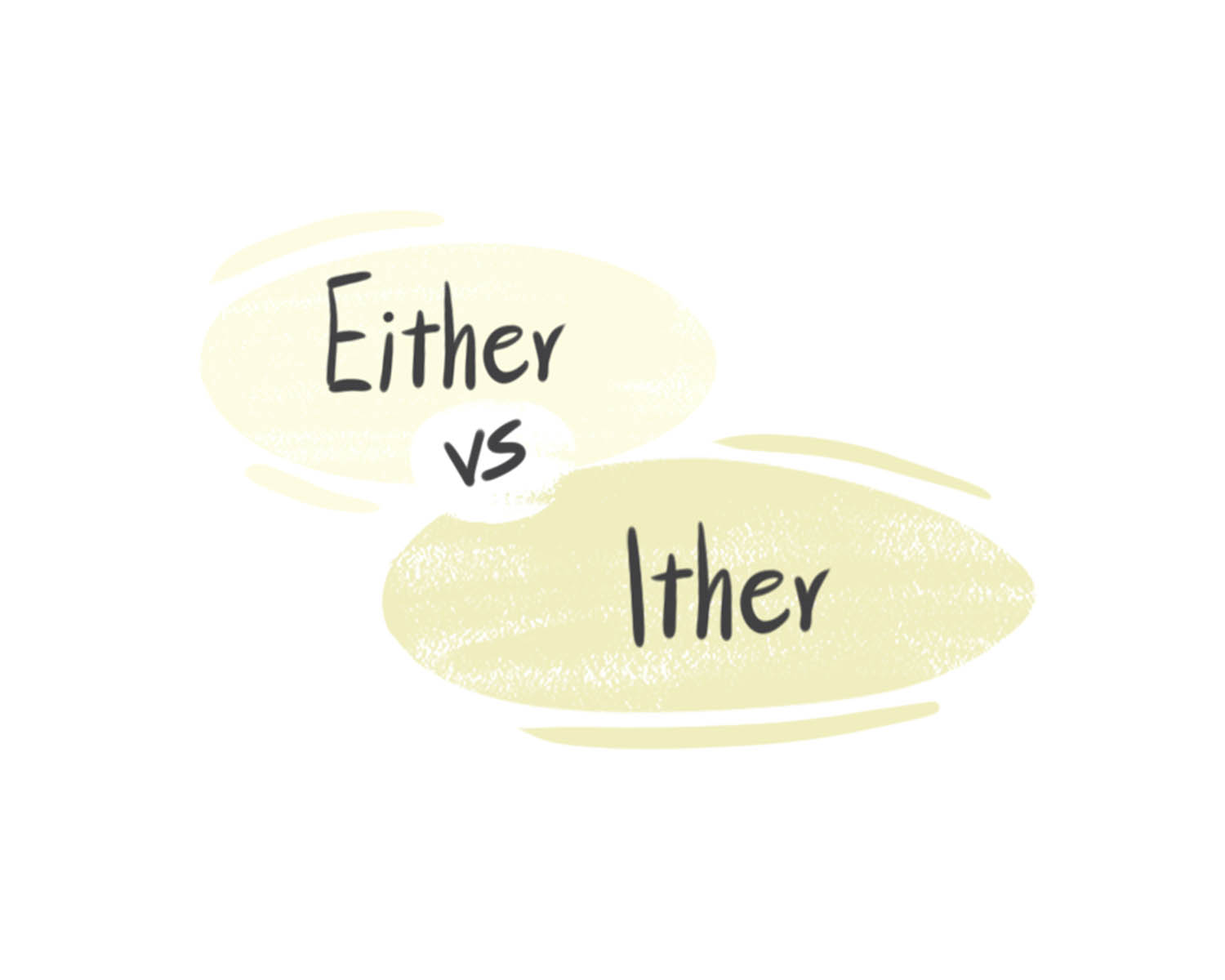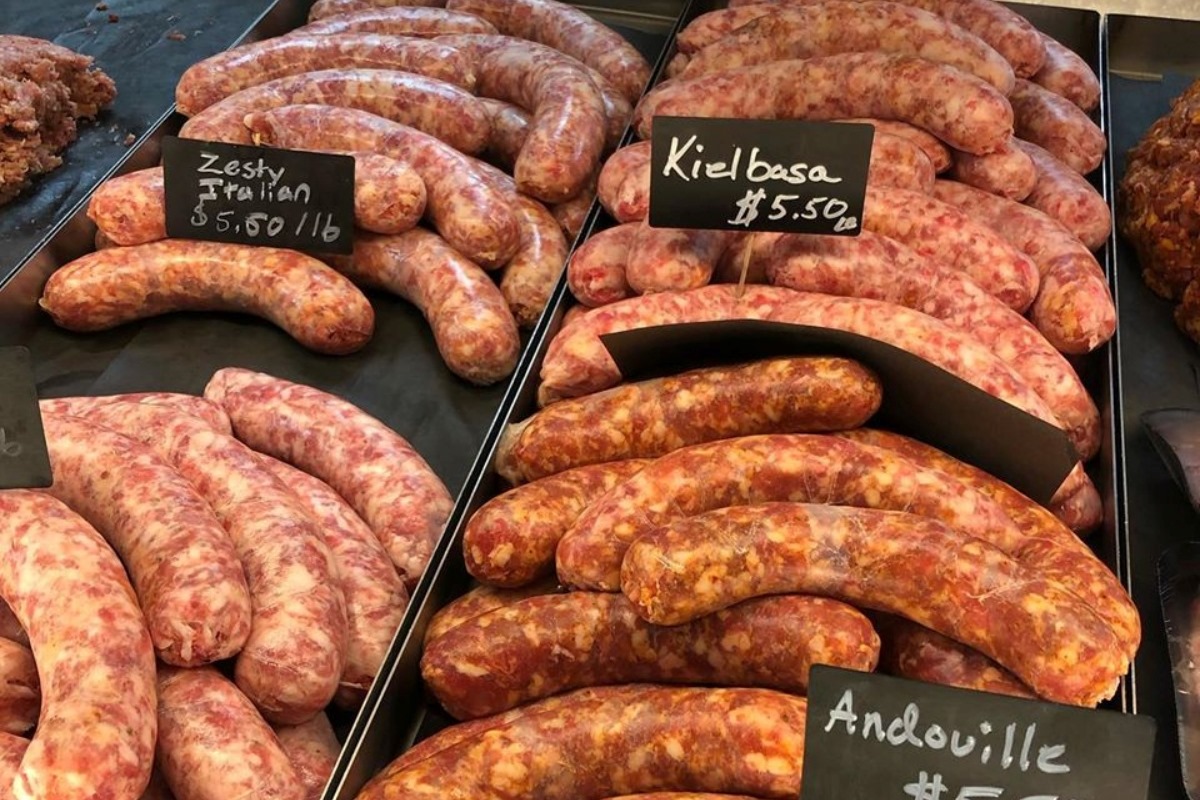Home>Language and Grammar>The Surprising Differences Between Catalan And Spanish
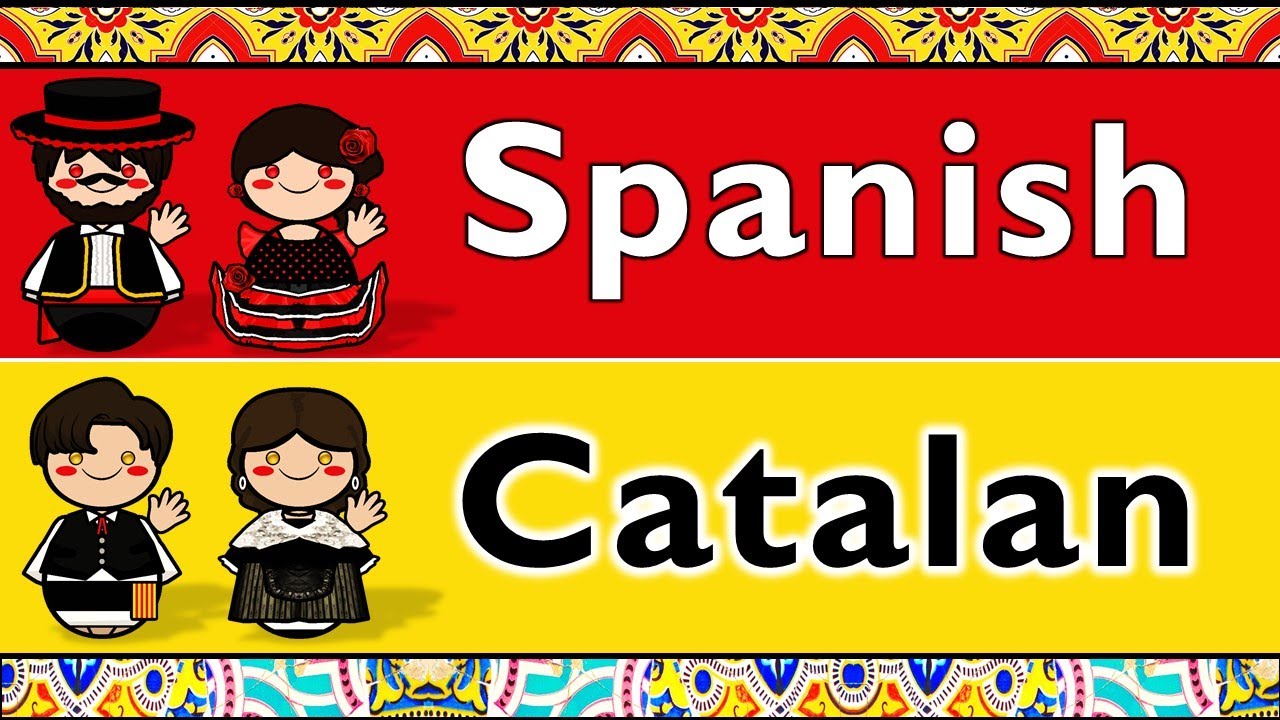

Language and Grammar
The Surprising Differences Between Catalan And Spanish
Published: February 5, 2024
Discover the unique nuances in language and grammar between Catalan and Spanish. Uncover the surprising distinctions that set these two languages apart.
(Many of the links in this article redirect to a specific reviewed product. Your purchase of these products through affiliate links helps to generate commission for Noodls.com, at no extra cost. Learn more)
Table of Contents
Introduction
When it comes to the rich tapestry of languages, Catalan and Spanish stand out as vibrant threads woven into the intricate fabric of the Iberian Peninsula. These two languages, while sharing some similarities, possess distinct characteristics that reflect the diverse cultural and historical influences that have shaped their development. Exploring the nuances between Catalan and Spanish not only unveils the linguistic disparities but also offers a glimpse into the unique identities and traditions of the regions where these languages are spoken.
As we delve into the fascinating world of Catalan and Spanish, we will uncover the historical origins that have contributed to their evolution, examine the differences in language and phonetics, dissect the contrasting grammar and syntax structures, dissect the lexicon and idiomatic expressions that set them apart, and ultimately gain insight into the cultural and social disparities that have shaped these languages.
Embarking on this linguistic journey, we will navigate through the labyrinth of linguistic diversity, unraveling the intricate tapestry that distinguishes Catalan from its more widely spoken counterpart, Spanish. Through this exploration, we aim to shed light on the lesser-known aspects of these languages and celebrate the richness of their individual identities. Let's embark on this enlightening expedition to unravel the surprising differences between Catalan and Spanish.
History and Origins
The historical roots of Catalan and Spanish are deeply intertwined with the complex tapestry of the Iberian Peninsula. Catalan, a Romance language with its origins in the medieval Latin spoken in the region, has been shaped by a myriad of influences, including the Roman occupation, the migration of Germanic tribes, and the Islamic rule in the region. Its emergence as a distinct language can be traced back to the expansion of the County of Barcelona and the establishment of the Crown of Aragon, which fostered the development of Catalan as a language of literature, administration, and culture.
In contrast, the history of Spanish, also known as Castilian, is marked by the fusion of Latin with the language of the Visigoths, who ruled the Iberian Peninsula after the fall of the Roman Empire. The subsequent influence of Arabic, brought by the Moors, and the interactions with other Romance languages spoken on the peninsula, further enriched the linguistic landscape, paving the way for the emergence of Spanish as a dominant language.
The linguistic evolution of Catalan and Spanish took divergent paths, with Catalan maintaining its distinct identity in the northeastern regions of Spain, including Catalonia, Valencia, and the Balearic Islands, while Spanish emerged as the predominant language of the central and southern regions of the peninsula. The coexistence of these languages within the same geographical area has contributed to the preservation of their unique linguistic traits and cultural significance.
The rich historical tapestry of Catalan and Spanish reflects the intricate interplay of diverse cultural and linguistic influences that have shaped the identity of the Iberian Peninsula. Understanding the historical origins of these languages provides a profound insight into the complex dynamics that have defined their development and underscores the significance of preserving their individuality within the broader context of linguistic diversity.
Language and Phonetics
The linguistic landscape of the Iberian Peninsula is adorned with a diverse array of phonetic nuances that distinguish Catalan and Spanish. These languages, while sharing some common phonetic elements, exhibit distinct pronunciation patterns and phonological features that reflect their unique identities.
Catalan, renowned for its melodic cadence and rhythmic intonation, boasts a rich array of vowel sounds that contribute to its musicality. The presence of mid vowels and diphthongs, coupled with the characteristic open-mid vowels, lends Catalan its distinctive phonetic charm. The pronunciation of consonants in Catalan, characterized by the soft articulation of the dental fricatives and the vibrant trill of the alveolar r, further enriches the phonetic tapestry of the language.
In contrast, Spanish is celebrated for its clear and crisp pronunciation, marked by the distinction between the five vowel phonemes and the rhythmic stress patterns that impart a dynamic cadence to the language. The vibrant trill of the Spanish r and the distinctive pronunciation of the consonants, including the voiced dental fricative and the velar fricative, contribute to the phonetic allure of the language.
The phonetic divergence between Catalan and Spanish is further accentuated by the distinct intonation patterns and prosodic features that shape the oral expression of these languages. Catalan, with its rising and falling intonation patterns, exudes a lyrical quality that resonates through its spoken form. Spanish, on the other hand, is characterized by its rhythmic stress patterns and the distinctiveness of the syllable-timed rhythm, which adds a vibrant cadence to the spoken word.
Exploring the intricate phonetic nuances of Catalan and Spanish unveils the captivating diversity that enriches the linguistic landscape of the Iberian Peninsula. The melodic charm of Catalan and the rhythmic dynamism of Spanish reflect the profound influence of historical, cultural, and geographical factors that have shaped the phonetic evolution of these languages. Embracing the unique phonetic identities of Catalan and Spanish offers a deeper appreciation of the rich tapestry of sounds that define these vibrant languages.
Grammar and Syntax
Grammar and syntax serve as the backbone of linguistic structure, shaping the expression and comprehension of ideas within a language. When comparing Catalan and Spanish, it becomes evident that while both languages belong to the Romance language family, they exhibit distinct grammatical and syntactical features that contribute to their individual identities.
In Catalan, the use of definite articles preceding possessive adjectives, as in "el meu cotxe" (the my car), exemplifies a unique grammatical trait not found in Spanish. Additionally, the placement of object pronouns before the verb, as in "ho veig" (I see it), differs from the post-verb placement commonly observed in Spanish. The use of the periphrastic future tense, formed with the verb "anar" (to go) followed by the infinitive, as in "aniré" (I will go), further distinguishes Catalan grammar from Spanish.
Conversely, Spanish employs distinct grammatical structures, such as the use of the preposition "a" to mark the personal "a" before direct objects, a feature absent in Catalan. The conjugation of verbs in the subjunctive mood, reflecting nuances of doubt, desire, or uncertainty, is a prominent grammatical feature in Spanish that differs from Catalan. Furthermore, the use of the personal pronoun "vosotros" (you all) for the second person plural, a form not utilized in Catalan, underscores the grammatical disparities between the two languages.
In terms of syntax, Catalan and Spanish exhibit divergent word order patterns that influence the arrangement of elements within sentences. Catalan, characterized by a flexible word order due to its reliance on inflectional endings, allows for greater syntactical variation compared to Spanish. The placement of adjectives after the noun, as in "casa gran" (house big), reflects the syntactical flexibility inherent in Catalan.
In contrast, Spanish adheres to a more rigid word order, with adjectives typically preceding the noun, as in "casa grande" (big house). The syntactical structure of Spanish sentences is further influenced by the use of clitic pronouns, which are attached to verbs to indicate objects or recipients, a feature that differs from Catalan syntax.
The examination of grammar and syntax in Catalan and Spanish unveils the intricate web of structural nuances that define the linguistic expression within each language. The distinct grammatical and syntactical features of Catalan and Spanish not only reflect their historical evolution but also underscore the diverse pathways through which these languages have flourished. Embracing the unique grammar and syntax of Catalan and Spanish offers a profound insight into the intricate tapestry of linguistic diversity that enriches the Iberian Peninsula.
This in-depth exploration of the grammar and syntax of Catalan and Spanish highlights the linguistic intricacies that contribute to the distinctive identities of these two languages. By delving into the structural nuances that shape the expression of ideas and emotions, we gain a deeper appreciation for the profound influence of grammar and syntax on the richness of linguistic diversity.
Vocabulary and Idioms
The lexical richness and idiomatic expressions embedded within a language serve as a testament to its cultural heritage and historical evolution. When comparing Catalan and Spanish, it becomes evident that the vocabulary and idiomatic expressions in each language encapsulate the unique essence of their respective cultures and traditions.
Catalan, with its roots deeply intertwined with the medieval Latin spoken in the region, boasts a lexicon that reflects the diverse historical influences that have shaped its development. The presence of words derived from Latin, Arabic, and French, among other languages, underscores the rich tapestry of linguistic influences that permeate the Catalan vocabulary. Additionally, Catalan encompasses a wealth of idiomatic expressions that vividly capture the nuances of everyday life, reflecting the cultural identity and collective experiences of its speakers.
In contrast, Spanish, with its fusion of Latin, Visigothic, and Arabic influences, exhibits a lexical diversity that mirrors the complex historical interactions that have defined the linguistic landscape of the Iberian Peninsula. The Spanish vocabulary is replete with words that have traversed centuries, preserving the echoes of ancient civilizations and the imprint of global encounters. Idiomatic expressions in Spanish, characterized by their colorful imagery and evocative metaphors, offer a window into the rich tapestry of Hispanic culture and folklore.
The lexical disparities between Catalan and Spanish are further accentuated by the presence of region-specific vocabulary and idiomatic expressions that reflect the distinct cultural identities of the regions where these languages are spoken. Catalan, as a language spoken in Catalonia, Valencia, and the Balearic Islands, incorporates regional variations and idiomatic expressions that mirror the unique customs and traditions of these locales. Similarly, Spanish encompasses regional vocabulary and idiomatic expressions that capture the diverse cultural nuances of the different Spanish-speaking regions.
Exploring the vocabulary and idiomatic expressions of Catalan and Spanish unveils the profound influence of historical, cultural, and geographical factors that have shaped the linguistic identities of these languages. The lexicon and idiomatic expressions embedded within Catalan and Spanish serve as a testament to the enduring legacy of their respective cultures, offering a captivating glimpse into the collective experiences and traditions of their speakers.
Embracing the lexical richness and idiomatic diversity of Catalan and Spanish provides a deeper understanding of the intricate tapestry of linguistic heritage that defines the Iberian Peninsula. The vocabulary and idiomatic expressions of these languages not only reflect their historical evolution but also serve as a testament to the enduring legacy of cultural diversity and linguistic vitality that enrich the fabric of the Iberian Peninsula.
Cultural and Social Differences
The cultural and social differences between Catalan and Spanish extend far beyond linguistic nuances, encompassing a rich tapestry of traditions, customs, and collective identities that distinguish these two vibrant communities. The historical and geographical factors that have shaped the development of Catalan and Spanish have given rise to unique cultural and social landscapes, each characterized by its own set of customs, traditions, and societal norms.
Catalan culture, deeply rooted in the northeastern regions of Spain, reflects a strong sense of regional identity and pride, epitomized by the celebration of traditional festivals, such as La Mercè in Barcelona and the Festa de Sant Joan in Catalonia. The cultural fabric of Catalan society is interwoven with a rich legacy of artistic expression, including the renowned works of Antoni Gaudí and the captivating rhythms of traditional Catalan music and dance. Additionally, the culinary traditions of Catalonia, featuring iconic dishes such as paella, escalivada, and crema catalana, showcase the region's gastronomic prowess and culinary heritage.
In contrast, Spanish culture, with its diverse regional influences and historical legacies, encompasses a vibrant tapestry of traditions and customs that vary across the different Spanish-speaking regions. The flamboyant flamenco music and dance of Andalusia, the colorful festivals of Valencia, and the rich tapestry of Moorish architecture in Granada are emblematic of the cultural diversity that defines Spain. The social fabric of Spanish society is further enriched by a deep appreciation for art, literature, and gastronomy, with iconic figures such as Pablo Picasso and Salvador Dalí leaving an indelible mark on the global artistic landscape.
The social dynamics within Catalan and Spanish communities are shaped by a complex interplay of historical legacies, regional identities, and societal norms. The concept of "seny" in Catalan culture, embodying wisdom, pragmatism, and rationality, reflects the values that underpin social interactions and decision-making in Catalan society. In contrast, the concept of "duende" in Spanish culture, encapsulating a profound sense of passion, emotion, and authenticity, permeates the social fabric of Spanish communities, influencing the dynamics of interpersonal relationships and artistic expression.
The exploration of cultural and social differences between Catalan and Spanish offers a captivating glimpse into the diverse tapestry of traditions, customs, and societal norms that define these vibrant communities. Embracing the cultural and social intricacies of Catalan and Spanish culture provides a profound insight into the enduring legacy of historical, geographical, and social influences that have shaped the identities of these vibrant communities.
Conclusion
In conclusion, the exploration of the surprising differences between Catalan and Spanish has unveiled a rich tapestry of linguistic, cultural, and social nuances that define these two vibrant languages and the communities they represent. From their historical origins and linguistic evolution to the distinctive grammar, syntax, vocabulary, and idiomatic expressions, Catalan and Spanish stand as testament to the enduring legacy of linguistic diversity within the Iberian Peninsula.
The historical and geographical factors that have shaped the development of Catalan and Spanish have given rise to unique cultural and social landscapes, each characterized by its own set of customs, traditions, and societal norms. The celebration of regional festivals, the artistic expressions, and the culinary heritage of Catalonia and the diverse regional influences and traditions across the Spanish-speaking regions reflect the profound influence of historical, cultural, and geographical factors that have shaped the linguistic identities of these languages.
Embracing the unique phonetic identities, grammatical structures, lexical richness, and idiomatic diversity of Catalan and Spanish offers a deeper understanding of the intricate tapestry of linguistic heritage that defines the Iberian Peninsula. The melodic charm of Catalan and the rhythmic dynamism of Spanish reflect the profound influence of historical, cultural, and geographical factors that have shaped the phonetic evolution of these languages. The distinct grammatical and syntactical features of Catalan and Spanish underscore the diverse pathways through which these languages have flourished, while the lexicon and idiomatic expressions embedded within Catalan and Spanish serve as a testament to the enduring legacy of their respective cultures.
The cultural and social differences between Catalan and Spanish extend far beyond linguistic nuances, encompassing a rich tapestry of traditions, customs, and collective identities that distinguish these two vibrant communities. The enduring legacy of historical, geographical, and social influences has shaped the identities of Catalan and Spanish, reflecting the richness of cultural diversity and linguistic vitality that enriches the fabric of the Iberian Peninsula.
In essence, the exploration of Catalan and Spanish has not only shed light on the linguistic disparities but has also provided a glimpse into the unique identities and traditions of the regions where these languages are spoken. This journey through the labyrinth of linguistic diversity has underscored the significance of preserving the individuality of Catalan and Spanish within the broader context of cultural and linguistic heritage. By celebrating the rich tapestry of Catalan and Spanish, we honor the enduring legacy of historical, cultural, and social influences that have shaped these vibrant languages and the communities that embrace them.

